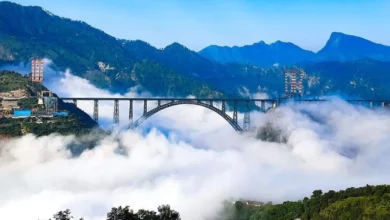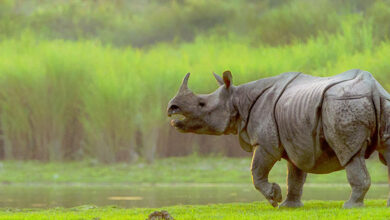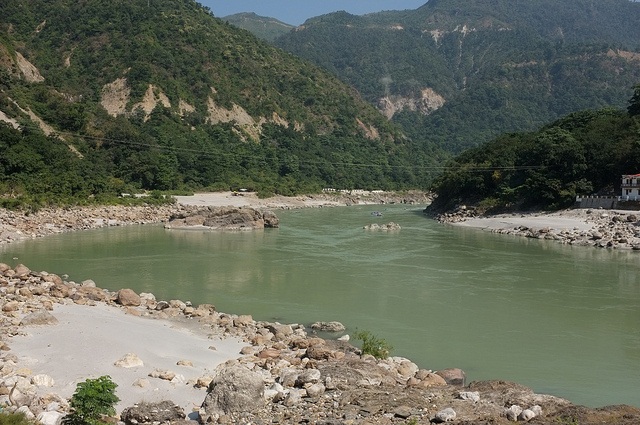
The Indian Rivers Inter-link Project: Is it needed?
Addressing the annual havoc created by droughts and floods in many parts of the country, the Indian rivers inter-link project was initially proposed by the Atal Bihari Vajpayee-led NDA government at the Centre in 2002.
It is essentially a very large-scale ($87 billion) civil engineering project. It aims at linking Indian rivers by a network of reservoirs and canals in order to reduce recurring-floods in some parts and water shortages in other parts of India.
Split into three parts; northern Himalayan rivers inter-link component, a southern Peninsular component and an intrastate rivers linking component, it is managed by India’s National Water Development Agency (NWDA) under its Ministry of Water Resources.
It should link 60 rivers, including the Ganges, which the government hopes will cut down farmers’ dependence on the unpredictable monsoons.
For the longest time, it couldn’t start as states failed to end differences over water sharing contracts and clearances. As for now, Prime Minister Narendra Modi has personally pushed through clearances for the first phase of the project.
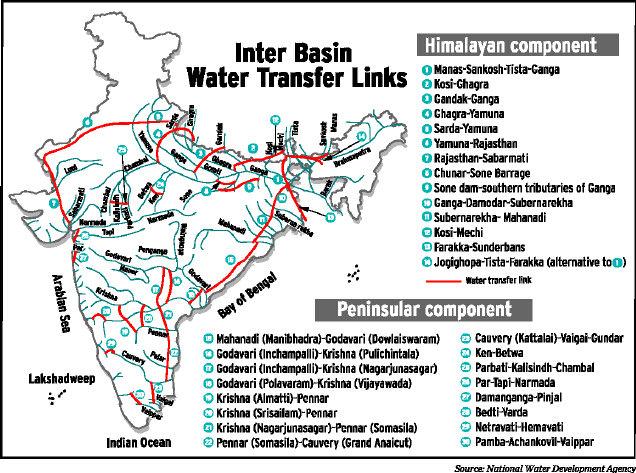
The first phase is the Ken-Betwa river interlinking project which will include the construction of a dam on the Ken river and a 22-km canal connecting it to the Betwa. Both rivers flow through Uttar Pradesh and Madhya Pradesh. Ken river also flows through a tiger reserve and the government plans on clearing out 6.5 percent of the forest reserve to build the dam. It will include relocation of approximately 2000 families from 10 distant villages.
Sanjeev Balyan, the water resources minister said “We have got clearances in record time, with the last round of clearances coming in only this year. The Ken-Betwa interlinking tops the priority list of the government.”
Monsoons across the country have not been uniform. The east and the north get most of the rain, while the west and the south get it comparatively less. Government officials believe that diverting water from major rivers such as the Ganges, Godavari, and Mahanadi to sparse waterways is the solution to the varied geographical and time variances in the availability of natural water.
Other ongoing Rivers project(s):
- Projects to interlink Par-Tapi with the Narmada and Daman Ganga with Pinjal
- Godavari-Krishna interlinking in Andhra Pradesh
- Godavari-Penna interlinking project in Andhra Pradesh
- Thamirabarani-Karumeniyar-Nambiyar rivers interlinking project in Tami Nadu
- Six river linking projects in Tamil Nadu
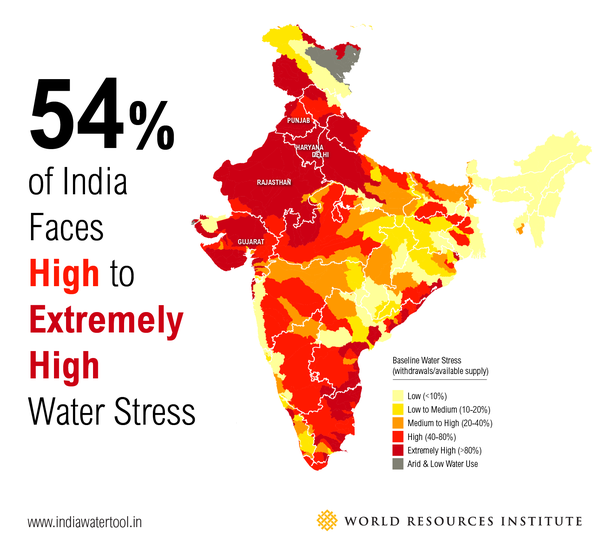
Advantages:
- Starting with the positive impact of the project, if everything goes as per plan, places that suffer from a shortage of water and severe droughts will have water throughout the year. It will give benefits of 35 million hectares of irrigation giving a rise in the overall irrigation potential. Problems of flood control, irrigation, and farmer output will surely be resolved to an extent.
- It will help the agriculture sector. Since almost half of India’s population is agro-dependant, whenever there is a lack in uniformity or complete absence of monsoon, rural poverty increases. With this project, storage and transfer of water will be possible which will broaden the income sources in rural areas.
- More water connectivity means more commercial activity and faster movement of goods from one place to another. It will help the states in reducing the expenditure on providing water to the industries.
- It will enhance the long-term sustainable productivity of the river basins & mitigate the anthropogenic influences on the rivers by allowing adequate salt export to the sea in the form of environmental flows. When sufficient salt export is not taking place from a river basin to the sea in an attempt to harness the river water fully, it leads to river basin closer and the available water in a downstream area of the river basin becomes saline or alkaline water.
Disadvantages:
- On the other hand, many ecologists and environmentalists are against the idea of this project. It seems unwary and dangerous and is bound to create disturbance in the existing environment situation. Mass deforestation is inevitable and it will affect the rain cycle. If this happens, it defeats the whole purpose of the initiation of this project in the first place.
- It will reduce the amount of fresh water in the seas which will be a threat to the marine life system. As mentioned above, it will surely cause displacement of people in huge numbers causing difficulty to human life. The government will have to spend more and more to relocate these displaced people.
- Another natural disadvantage which questions the feasibility of the project is that rivers change their course in every 100 years. Hence, in the long run, it will not work. We might also have to deal with pollution load at a higher level even in the lesser polluted river systems.
- Monetarily, the government should have the estimated money at their disposal for this project. Failing which they’ll have to take loans from foreign resources, an added burden in the future.
Is it needed?
It seems like a good solution for a lot of our problems that exist today. Especially problems of excessive floods and excessive droughts in areas.
However, the disadvantages do exist which cannot be overlooked.
A proper execution of this plan must take place with all the factors, including ecological ones, are taken into account. If not, it will have serious long-term implications.

